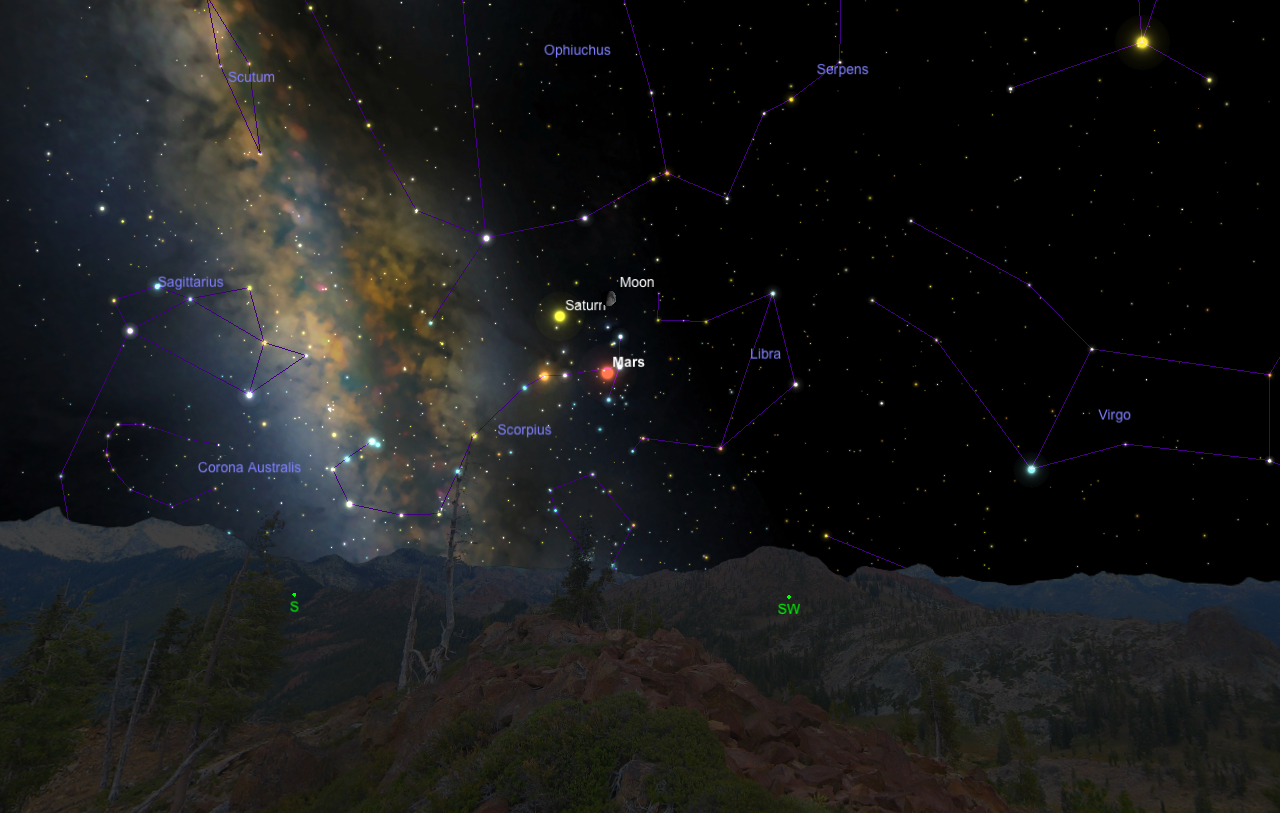Star Guide: Mars and meteors in August sky

Simulation Curriculum: 9:30pm Aug. 11, 2016 — the moon, Mars and Saturn in conjunction.
By Tony Berendsen
Mars is in Scorpio about 69 million miles from the Earth fading in brightness from its close approach of 47 million miles on May 30. Still the brightest object in the southern horizon the bright red color of Mars makes it easy to find in the early evening; it is a fast moving planet in the night sky, too.
The red planet orbits the sun at 54,000 mph, but the Earth’s orbital speed of 67,000 mph zooms past it causing retrograde (when Mars moves from the east to the west in the sky) and then, as the Earth begins to round the sun in our orbit, Mars returns to its normal movement of west to east and seems to speed up a little due to our vantage point.
Over the next few weeks it will move quickly eastward passing between Saturn and the bright red star Antares. You can see this if you go out and visually mark the location of Mars and Saturn every few nights. To help find Mars and Saturn the moon will point the way on the evening of Aug. 11 when it will mark the upper corner of a triangular conjunction made by Saturn, Mars, and the waxing gibbous moon.
An added bonus to being out under the night sky watching Mars is the best meteor shower of the year. The Perseid meteor shower is a favorite of many, often producing up to 60 meteor streaks an hour, but this year we may see even more. Scientists predict the Earth will be passing through a fairly dense clump of comet Swift Tuttle debris this year doubling the number of meteors per hour. Material shed by Swift Tuttle as it warms from the energy of the sun fills an orbital path that the Earth passes through every year causing the meteor shower.
Perseid meteors are fast moving and come from the area of the constellation Perseus. Traveling thousands of miles per hour falling into the Earth’s atmosphere particles of comet dust no bigger than the tip of your finger create this dazzling light show. They can appear in any part of the sky but will trace back to Perseus.
The peak of the shower is the night of Aug. 11 and the following morning of Aug. 12. In the early evening of the 11th the moon forming its triangle with Mars and Saturn will outshine some of the meteors, but if you wait until the early morning after the moon sets (about 1:30am) the sky will darken improving conditions for meteor watching. I plan to watch for Perseids the week before the peak to avoid the bright moon since the Earth will already be in the debris stream.
For millennia humans have watched the night sky. We have charted the paths of planets, proper motion of stars, and the subtle wobble of the Earth: precession. We have watched Venus climb above the morning horizon only to retreat and rise again in the evening and have seen Mercury do the same. There is no need of a telescope to notice these things; we need only our eyes. Our naked eye watching has helped scientists understand our place in the Cosmos, and sometimes a spectacular cosmic sight like Mars and meteors speeding across the sky.
Tony Berendsen runs Tahoe Star Tours. He may be reached at 775.232.0844 or tony@tahoestartours.com.


